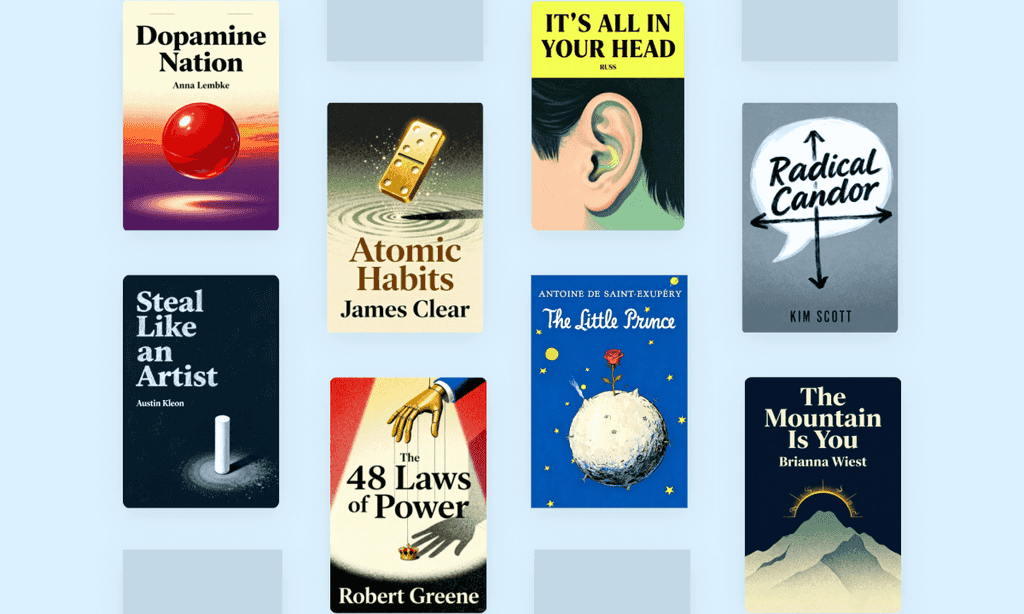
Meetings Suck by Cameron Herold Summary
Transform your dreaded meetings into powerful productivity engines. Cameron Herold's game-changing guide saves companies $25,000 annually by revolutionizing corporate culture. Featuring innovative role assignments that develop leadership skills, this business essential challenges you: how much is your meeting time actually worth?
About the author
Cameron Herold, bestselling author of Meetings Suck: Turning One of the Most Loathed Elements of Business Into One of the Most Valuable and renowned business growth expert, is a leading voice in operational leadership and organizational efficiency. As the mastermind behind scaling 1-800-GOT-JUNK? from $2 million to $106 million in revenue during his tenure as COO, Herold brings decades of hands-on experience streamlining corporate processes.
His book, focused on transforming unproductive meetings into strategic tools, reflects his expertise in fostering high-performance workplace cultures. Herold’s prior bestseller, Double Double: How to Double Your Revenue and Profit in 3 Years or Less (in its seventh printing), further cements his reputation for actionable business strategies.
Founder of the COO Alliance—a global peer advisory network for second-in-command executives—Herold has coached entrepreneurs across 20+ countries and hosts The Second in Command Podcast, sharing insights on operational excellence. His frameworks are utilized by Fortune 500 companies and monarchies alike. Double Double has sold over 300,000 copies, and his methodologies continue to shape modern corporate training programs worldwide.
FAQs About This Book
Meetings Suck by Cameron Herold offers actionable strategies to transform unproductive meetings into efficient, results-driven sessions. The book argues that meetings themselves aren’t the problem—poor execution is—and provides step-by-step systems for optimizing agendas, fostering engagement, and reducing wasted time. Key themes include punctuality, daily huddles, opt-out policies for irrelevant meetings, and progress tracking to align teams.
This book is ideal for leaders, managers, and entrepreneurs seeking to improve workplace productivity. It’s particularly valuable for those frustrated by time-consuming, ineffective meetings and aiming to build a culture of accountability. Small business owners will benefit from its focus on establishing meeting frameworks early to scale efficiently.
Yes—readers praise its concise, practical advice for saving thousands of dollars annually by streamlining meetings. Reviewers highlight actionable techniques like structured agendas, time limits, and energy-boosting huddles, calling it a "must-read" for leaders. The book’s direct approach (short chapters, no fluff) makes it a quick yet impactful read.
Core principles include:
- Start on time to respect schedules and set discipline.
- Allow opt-outs to ensure only relevant attendees participate.
- Daily huddles for quick, high-energy updates.
- Clear agendas distributed in advance to focus discussions.
- Follow-up systems to track action items and accountability.
Herold advocates for daily 15-minute "huddles" to maintain momentum. These meetings focus on quick wins, blockers, and priorities, avoiding deep dives. Standing meetings and time limits are recommended to keep energy high, while opt-out options reduce attendee fatigue.
Yes—the book estimates companies waste thousands yearly on inefficient meetings. By enforcing punctuality, trimming attendee lists, and using focused agendas, teams reclaim hours and cut costs. For example, a 10-person meeting starting 5 minutes late wastes 50 minutes of paid time daily.
Herold insists agendas must be shared 24+ hours in advance, listing clear objectives and time allocations per topic. This ensures preparedness and prevents tangential discussions. Agendas should also designate a facilitator to maintain focus and a note-taker for follow-ups.
Unlike broader productivity guides, Meetings Suck zeroes in on meeting culture with tactical fixes rather than vague theories. It’s often paired with Atomic Habits for behavioral change but stands out for its niche focus on transforming a single pain point into a growth lever.
Some readers note the book’s brevity (under 200 pages) may lack depth for complex organizations. However, most praise its conciseness as a strength, offering no-nonsense solutions without filler. Critics also highlight that implementing its systems requires consistent leadership buy-in.
While not explicitly focused on remote work, its principles apply universally: agendas, time limits, and opt-outs remain critical. The book’s emphasis on brevity and preparation aligns with hybrid teams’ needs to minimize Zoom fatigue and maximize asynchronous collaboration.
With businesses prioritizing efficiency post-pandemic, the book’s strategies help teams navigate shorter attention spans and distributed workforces. Its focus on reducing wasted time aligns with trends like AI-driven scheduling and productivity analytics, making it a timely resource.
“Meetings don’t suck—we suck at running meetings.” This line encapsulates Herold’s thesis: blaming meetings is counterproductive; refining their structure unlocks their potential as tools for alignment and growth.
Quick Summary Mode - Read or listen to Meetings Suck Summary in 9 Minutes
Break down key ideas from Meetings Suck into bite-sized takeaways to understand how innovative teams create, collaborate, and grow.
Flash Card Mode - Top 10 Insights from Meetings Suck in a Nutshell
Distill Meetings Suck into rapid-fire memory cues that highlight Pixar’s principles of candor, teamwork, and creative resilience.

Fun Mode - Meetings Suck Lessons Told Through 22-Min Stories
Experience Meetings Suck through vivid storytelling that turns Pixar’s innovation lessons into moments you’ll remember and apply.
Personalize Mode - Read or listen to Meetings Suck Summary in 0 Minutes
Ask anything, pick the voice, and co-create insights that truly resonate with you.

From Columbia University alumni built in San Francisco
See More Stories?

Get the Meetings Suck summary as a free PDF or EPUB. Print it or read offline anytime.

























